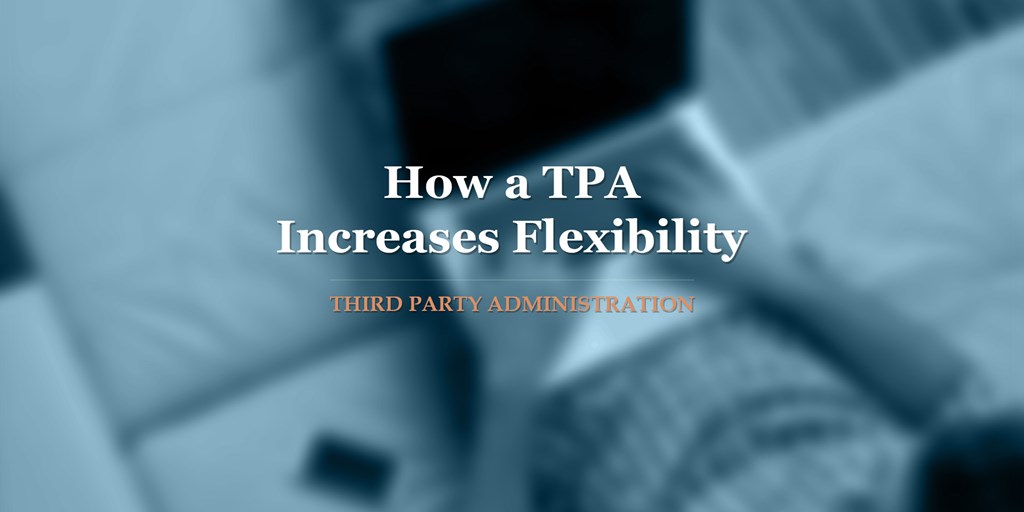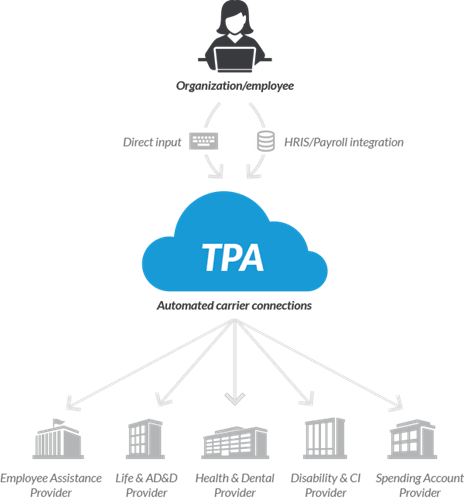How a TPA Increases Flexibility

In previous articles we covered various third party administrator (TPA) topics including: what a TPA is, and how some TPAs can lower the cost of administration.
This article looks at how a TPA can streamline group benefits administration for your company while also giving your company the opportunity to offer best-in-class benefits to your employees.
Streamlined Admin
The most common way in which a TPA can increase flexibility is by offering a centralized, robust employee benefits administration system that consolidates the management of a number of benefit providers into one platform.

To understand the power of this offering, consider the following reality in the benefits administration world:
Employer admin departments typically spend the majority of their time working to keep up on day-to-day admin. In most cases, an employer will have a benefit plan supported by one insurance carrier. The employer will take on the administration of the plan, as described in the plan carrier’s long form technical administrative guide. Day-to-day administration of the plan, from enrollments, to coverage changes and terminations will be performed on the plan carrier’s admin system. This day to day admin will be a mix of paper-chasing, post-it note reminders, manual excel sheet updating, cross referencing the plan carrier’s technical guide, and data entry into the plan carrier’s admin system.
Insurance carriers cannot offer the best benefit product for each line of benefit. In the above scenario, some benefits provided by the plan carrier will be great, others not so much. The employer could look to another carrier for a specific benefit to improve the plan overall, but the admin team is already at capacity and adding a better benefit would mean doubling the admin team’s work, i.e. a second carrier admin system to learn and update, a second paper chase routine, and a second technical guide to learn and comply with. Adding a third carrier is likely impossible.

This is where TPAs can help. TPAs can improve flexibility by acting as a centralized administration and customer service hub for benefit packages made up of a mix of different carriers. From the company’s perspective, it gets access to more benefits without adding layers of work. Instead, the company is supported by the TPA, and the TPA’s administration services take care of the complexities in the background.
Best-in-class Benefits
To get best-in-class benefits, employers need to be free to choose the plan that suits them best. Employers need to be diligent when selecting a TPA not all multi-carrier plans guarantee freedom. In fact, a fixed TPA offering might as well be a carrier offering, even if there are several carriers supporting it because of the difference between the following types of multi-carrier plans:
- Fixed Multi-Carrier - the same carriers always support the same benefits in the TPA’s offered plan. Yes it is multi carrier, but it is rigid. The employer does get the TPA benefit of streamlined administration, but does not get freedom to serve its employees in the best way possible.
- Best-In-Class - a company knows what its employees’ needs are. A true best-in-class TPA offering allows the employer and its advisor to design a plan that works best for the company, and then go to market to get each carrier’s best offering for that plan. The outcome is that over time different carriers may offer different lines of benefit supporting the plan, all while the TPA manages these changes in the background as it provides the employer with consistent, streamlined administration.
Put simply, best-in-class means freedom to support your workforce with a dynamic benefits packages over time. It means the flexibility to make change without losing your administration system or the efficiencies of a TPA. It means being in control of your benefits plan, and your data.